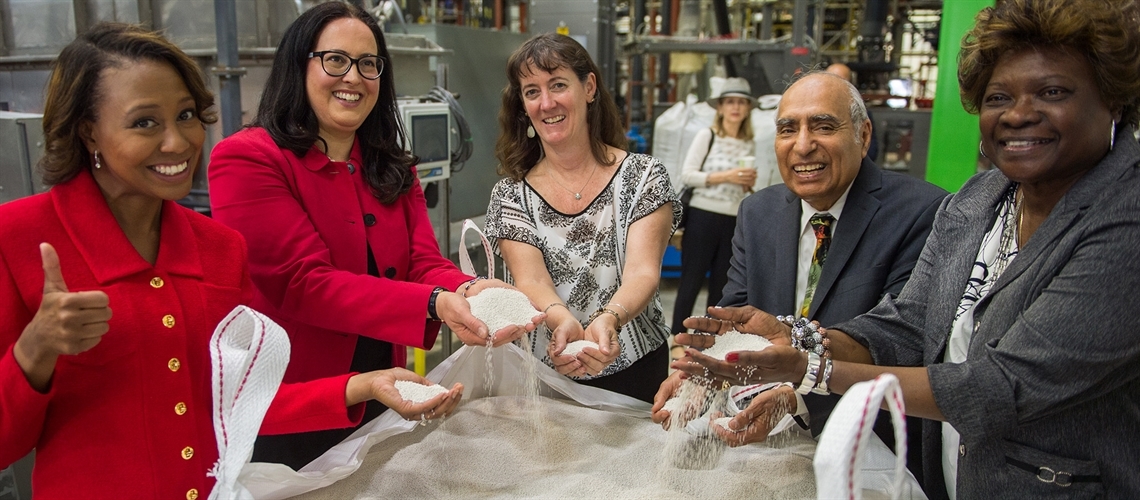Productive
2030 Goal: Productive use (and reuse) of water

Metropolitan Water Reclamation District
A new nutrient recovery system at Stickney Water Reclamation Plant produces fertilizer from phosphorous removed from wastewater.
Chicago’s rivers will be recognized and treated as an increasingly rich ecosystem that benefits plants, animals and people. By continuing to improve water quality, we will further boost surrounding property values and tax revenues.
Without diminishing downstream water quality, water levels or habitats, we will derive more economic value from river water and treated effluent. High-quality effluent could be used throughout the river system for industrial purposes, irrigation of community-scale and production-scale farms and fish farms, coolant for data centers, and more. In limited circumstances, river water itself may be used for irrigation. Opportunities to productively use river water and effluent will be embedded in corridor-specific industrial land use plans.
Building off the success of Metropolitan Water Reclamation District (MWRD) in recovering and selling phosphorous from wastewater, Chicago will build a global reputation for recovery, recycling and sale of nutrients from river water, effluent and sediments. New ways to generate renewable energy—from algae-based biofuel to hydrokinetic turbines—would harness the river for our region’s power grid. Experimental freshwater shellfish farming could improve water quality. Together these uses will clean the water and build our economy.
Making it happen
$2 million annual profit MWRD expects from selling fertilizer recovered from wastewater
- Investigate productive uses of effluent and incorporate them into newly revised industrial corridor plans.
- Conduct an assessment of feasible options and locations for cooling, irrigation or hydroelectric production, accounting for existing transportation needs and broader water management considerations.
- Assess feasibility and possible impacts from use of river water for irrigation of adjacent public landscapes or community-scale agriculture.
- Conduct a gap analysis to determine additional phosphorous management actions necessary to reach the State of Illinois’ goal of .01 milligrams per liter throughout the river system.
- Improve nutrient removal at all wastewater treatment facilities in the Chicago region.
Key players
U.S. Army Corps of Engineers, MWRD, Chicago Dept. of Planning and Development, U.S. Environmental Protection Agency, Ill. Environmental Protection Agency, Illinois International Port District, Current Innovation, academic institutions
Back to goals